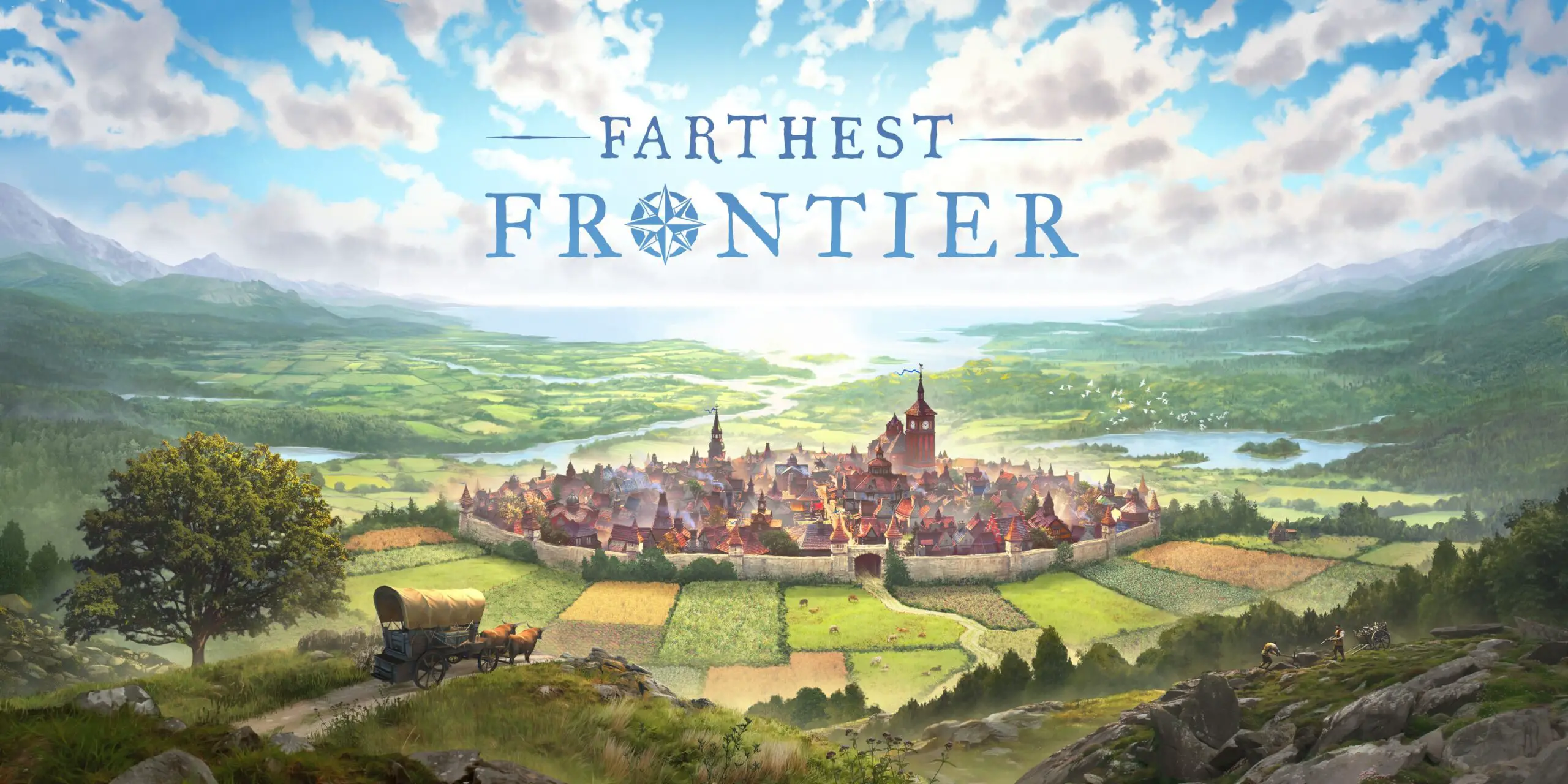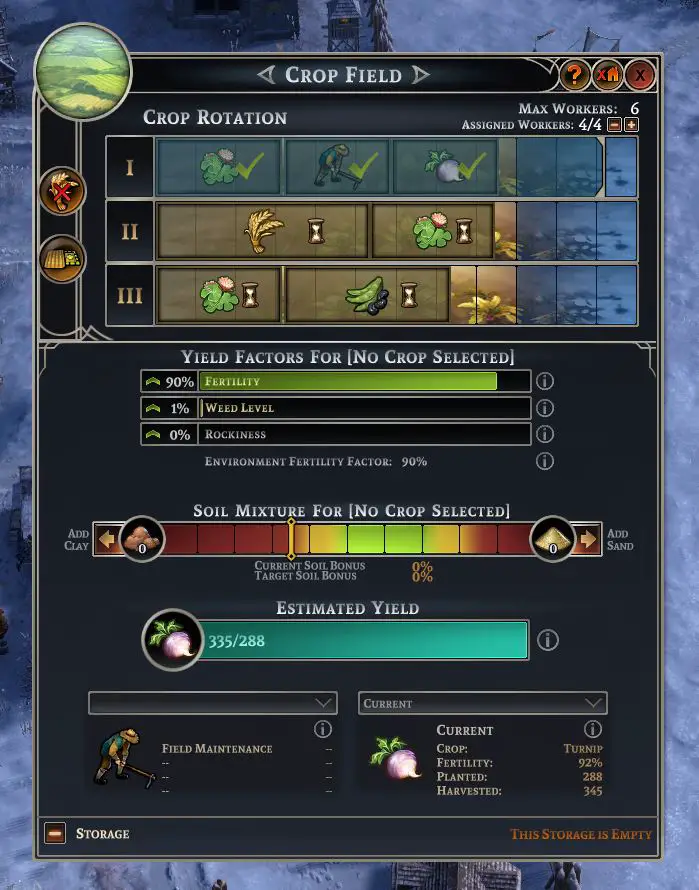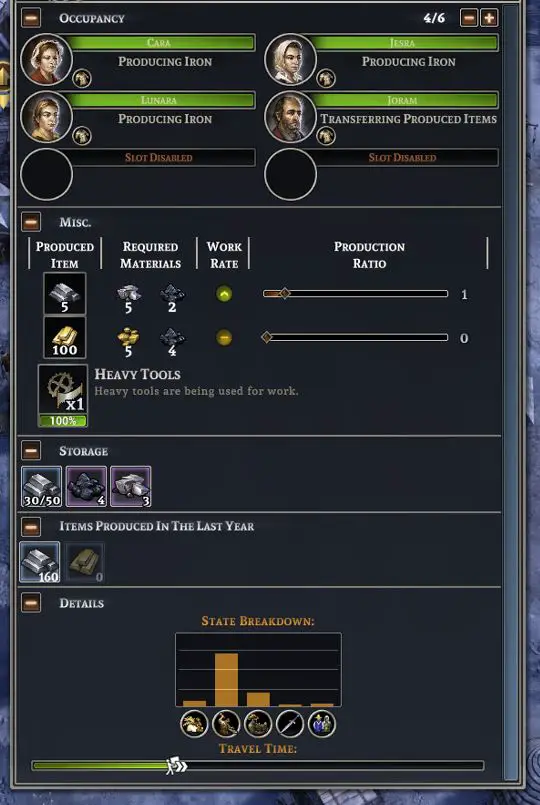Have you heard of Farthest Frontier? The survival colony builder is currently in early access and as a big fan of the genre, I took the opportunity to see if it was worth my and your time.
Farthest Frontier is developed and published by US-based Crate Entertainment. The team previously released Grim Dawn, an Action RPG, so the gulf between these two titles could hardly be any wider.
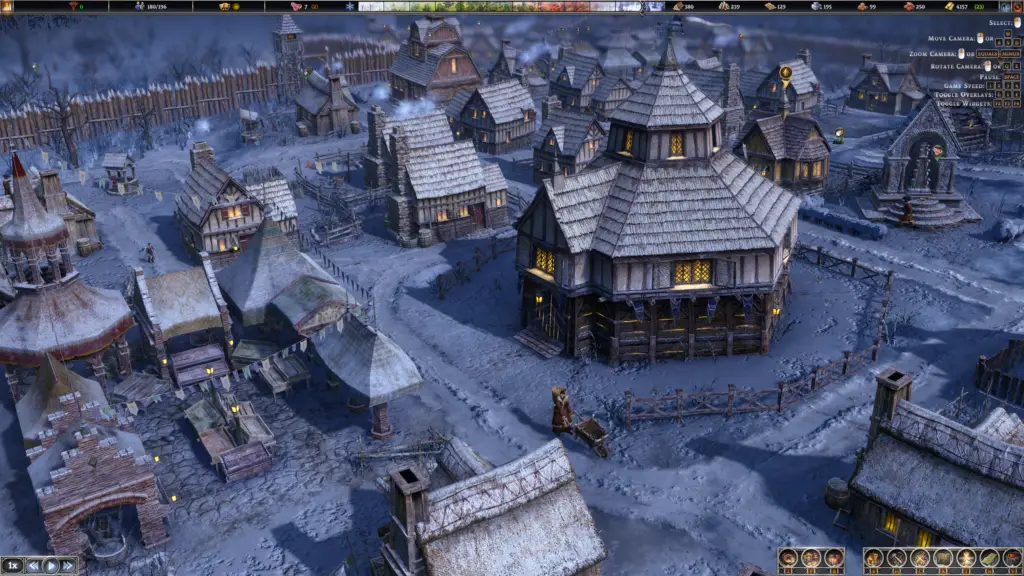
As soon as you start Farthest Frontier for the first time, you quickly realize that this title is a survival colony builder. As usual in the genre, you start your small settlement in the wilderness, the eponymous Farthest Frontier, with a dozen or so brave souls who have abandoned their homeland in search of a better life. Of course, your future villagers have also hauled along some resources and goods on an oxcart, but otherwise, they are completely dependent on you.
Compared to other survival colony builders, there are of course a few things that aren’t new here. The setting is the medieval wilderness in one of the biomes of varying difficulty that can be set at the beginning. Unlike Frostpunk, probably the greatest representative of the genre, Farthest Frontier currently has no overarching story and I’m not aware of any plans to introduce one. The story of your small village is simply what you make of it with your management skills.
But enough about what’s the same. What makes Farthest Frontier special? How does it stand out from the mass of other titles currently flooding the genre?
Probably the most notable difference is Farthest Frontier’s clear focus on farming as the means of choice to feed the population. The farming system is much more in-depth than you would expect. An overlay on the map shows you which areas are particularly fertile and you are well advised to plant your fields there for a good harvest.
But that’s not all. You have to assign a crop rotation to each field you build, which rotates over three years. Each of the crops you can grow has certain characteristics, such as resistance to cold and heat and requirements for the type of soil in which it is planted. When selecting the right crops for the crop rotation, you must therefore consider the time of year at which they should be planted and whether the soil has enough clay or sand in it.
The soil mixture is changed by the crop rotation itself, but you also have the option of correcting it by adding more clay or sand to the field. Two resources that you can either mine in the area around your settlement or for which you have to rely on trade with the traveling merchants.
But even these are not all the factors that influence your success in farming. Depending on where you have planted your field and which crops you grow, the rockiness of the soil and the weed level in your field will also change. Some crops can deal with this better, others worse. Some crops contribute to weed growth, while others tend to prevent it.
And when you have considered all this, perfected your crop rotation, and think you can look forward to winter without fear for once, wild animals eat away half your much-needed harvest. You should probably have built a fence around the fields.
It is therefore always a matter of planning, weighing up, testing, and improving or you run the risk of a bad harvest and your population going hungry as a result. At the moment, some crops are clearly better than other options, but the farming system is still a highlight of Farthest Frontier.
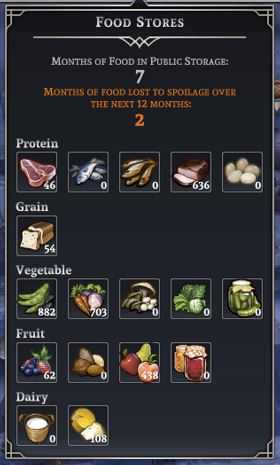
Another very interesting aspect is the more than understandable need of your villagers to not see supplies slowly spoil in the central storehouses and root cellars (yes, your food has a different shelf life depending on the type) but to store a smaller supply in their own homes. So off they go, fetching water from the nearest well, bread from the bakery, and smoked meat from the smokehouse or one of the warehouses.
However, this need is problematic when they instead should be pursuing their professions to keep your very fragile and vital economy running. To avoid this, you can build a market whose workers procure the necessary products and sell them to the surrounding residents. As a bonus, this will also add a little money to your coffers, which are hardly full to begin with.
Once you have reached a critical mass of working villagers and have built the basic infrastructure to sustain your small village, it becomes a little easier. But sooner or later, raiders will be attracted by your growing wealth and will try to plunder your warehouses. Oh, you haven’t made any weapons or built a palisade around the settlement? That could end badly.
Overall, the survival aspect is the strongest point of Farthest Frontier. Whether your hunters, foragers, or uninvolved villagers are attacked by wolves, bears, or wild boars, a wave of disease sweeps away your poor subjects en masse, raiders overcome your lines of defense or your miscalculation simply leads to an unplanned famine. As a player, the feeling that the next catastrophe could be lurking around the corner never quite leaves you.
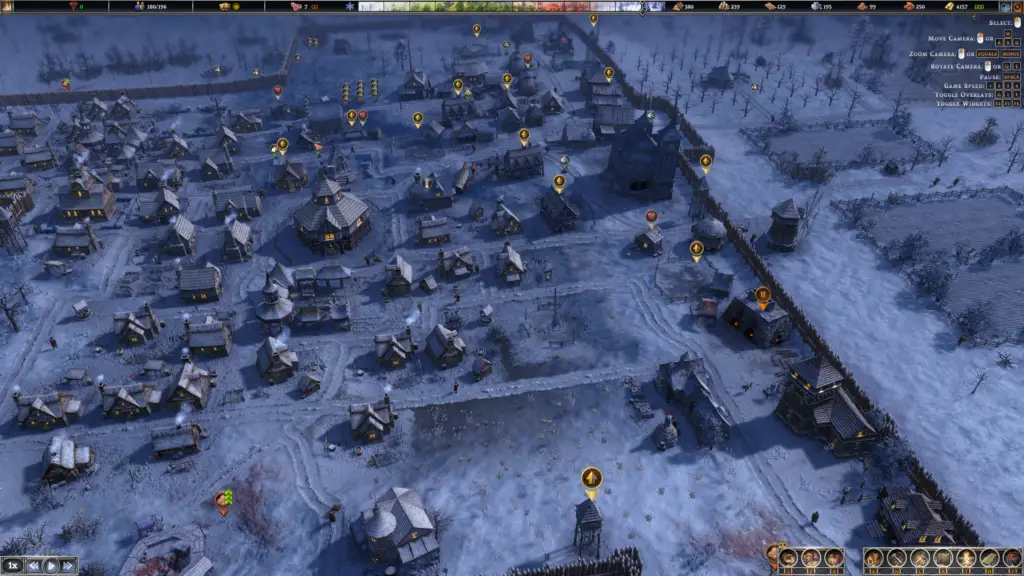
However, it is also true that the danger decreases significantly over time, at least temporarily. Once you have reached a certain town level, can build significantly more and better buildings than at the beginning, and have established something like civilization in your village, both raiders and wild animals immediately seem a lot less dangerous.
Ok, so why is Farthest Frontier still in early access? There are still a few adjustments and fixes to be made, some of them quite substantial.
Optimization is a rather big problem. As the population grows, you will be punished relatively quickly with a plummeting frame rate and small stutters. The performance is unfortunately not yet ready for release.
In addition, there is an AI that is, let’s say, still relatively simple at the moment. For example, your inhabitants regularly put themselves in completely unnecessary danger because they either don’t recognize it or overestimate their abilities.
My wainwrights have already been killed by approaching raiders far away from the settlement because they didn’t want to let a raid like that stop them from transporting the iron ore from the mine to the village. But the raiders are no smarter. As soon as they have thought about where they want to attack, they run straight towards this point, attack everything in the way, and in the meantime let themselves be killed one after the other by archers placed on watchtowers. Sure, after a while they flee, but by then they have been running like lemmings into the meat grinder.
To put it mildly, the interesting wayfinding does the rest. After all, even bears obey the rules of the road and dutifully follow my residents across the road towards the village.
Would I recommend Farthest Frontier? I can answer this question with a clear yes. Fans of survival colony builders will probably get their money’s worth here and the existing basis is already so good that we can play a very promising representative of the genre here. In my opinion, the shortcomings mentioned above can all be rectified before or with the 1.0 release.
For my part, I can hardly wait for the 1.0 release.

